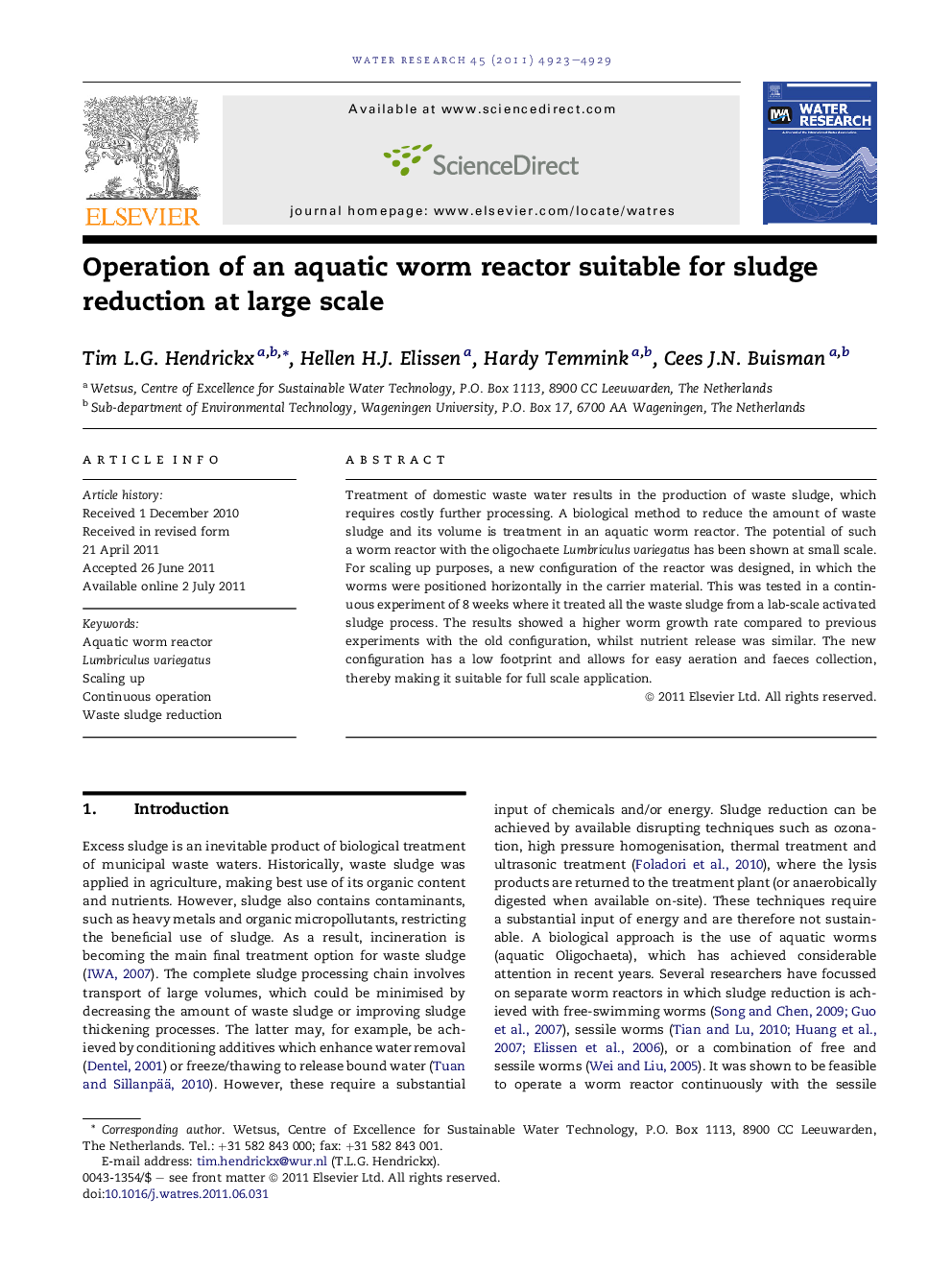| Article ID | Journal | Published Year | Pages | File Type |
|---|---|---|---|---|
| 4483061 | Water Research | 2011 | 7 Pages |
Treatment of domestic waste water results in the production of waste sludge, which requires costly further processing. A biological method to reduce the amount of waste sludge and its volume is treatment in an aquatic worm reactor. The potential of such a worm reactor with the oligochaete Lumbriculus variegatus has been shown at small scale. For scaling up purposes, a new configuration of the reactor was designed, in which the worms were positioned horizontally in the carrier material. This was tested in a continuous experiment of 8 weeks where it treated all the waste sludge from a lab-scale activated sludge process. The results showed a higher worm growth rate compared to previous experiments with the old configuration, whilst nutrient release was similar. The new configuration has a low footprint and allows for easy aeration and faeces collection, thereby making it suitable for full scale application.
► A new configuration of an aquatic worm reactor for waste sludge processing was tested. ► The worm reactor successfully processed the daily waste sludge of a lab activated sludge plant. ► Nutrient release and oxygen requirement by the worm reactor were determined. ► The new configuration is suitable for scaling up and has a low footprint.
